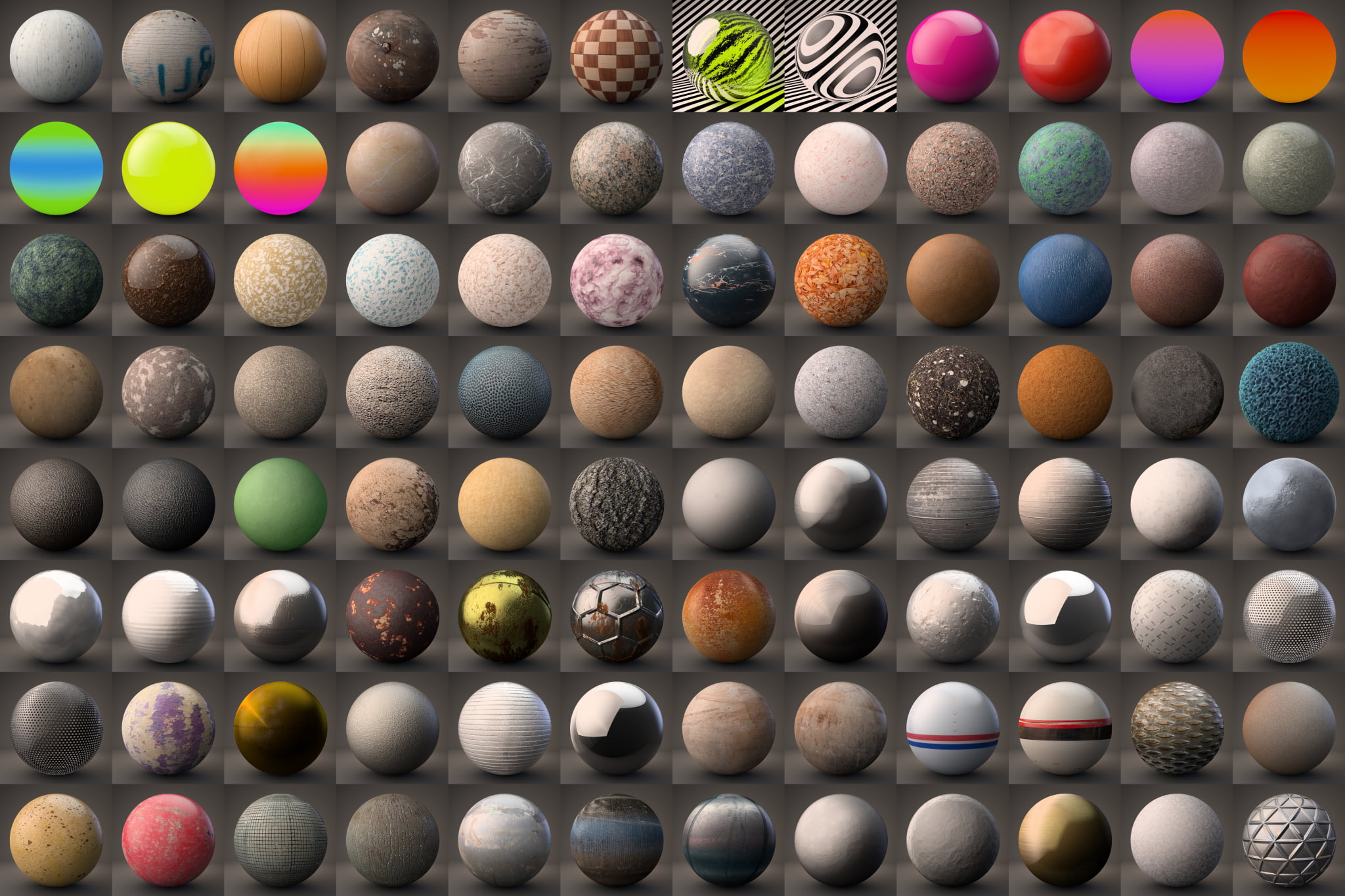

It's the same white as their parents because they are child objects. And as you can see, the pupils become white. So I'm going to click and drag and apply to this other eyeball.
Let's go ahead and apply this material also to the other eyeball. And it looks really good in this preview. So when I click on that right there, I now have this white material that's looking all right. Maybe there's sort of like an oily film on the top of this substance. But what I want to do is just choose something nice and easy like, I don't know, oil. And the custom preset was chosen by default. And inside of here, we have some presets. And dielectric tend to be things that are less conductive, things like plastics, and glass, and so forth, or insulators. Conductive or conductor surfaces, you would think of those as things like metal, things that are good at conducting heat or electricity. They are either conductive or dielectric. And this is a property of objects in the world. And we're going to change for now from none to something called a Dielectric.

And then, I'm going to go down to this layer for now option which makes objects more reflective at the edges when they're facing away than when they're facing towards the camera. And that's just because it's a holdover from a previous generation of computer graphics where you really needed these fake-looking reflections. Specular strength, I'm actually to bring all the way down to zero. By reflection strengthening, they keep nice and strong. And I have this roughness setting which allows me to blur out my reflection and I'm not going to pay too much attention to that. Next, I'm going to go down into my settings. And the name has no effect on what the material looks like, but it just helps me to know what I'm trying to do here. And what I want to do is rename this layer here from Layer One to Gloss. But before we do, let's go ahead and tweak the appearance of this reflection. And we'll work to improve that in just a moment. And that's because we are looking at our material, our super-reflective material in an all black environment. My character looks like it has a black eye. Now, when I render this right now, I'm not getting much. And it allows you to create really nice-looking reflections. Someone has done a lot of research and a lot of math and they came up with this GGX method. And I can very easily do that by clicking on these add dots right now. And what I'm trying to create is a glossy-looking eye material. Right now, I've got something called a specular layer turned on, and I can turn that off with this little eye icon right here, or I can click to remove it. Next, I'm going to go to the reflectance channel and modify some properties. I'm just going to double click to open it up, and this is going to open up something called the Material Editor which allows you to access all the same parameters you can access here in the Attributes Manager, but it's a specialized interface that's just a little bit easier to work with. And one other thing I'm to do is go into my eye white. I'm going to increase the brightness of this a little bit to make it a bit more white. Now this, by default, is actually a little bit gray. You go to this thing called the material manager down here at the bottom of the view and choose "Create new material." And by default, you'll get this white material right here, and you can drag it on to something like your eye. And in order to add a material to a scene, it's pretty simple. Materials are going to allow us to have bright colors, interesting textures, and a better, more realistic-looking object. If you want to do so, use the "base color" section in this thread up above.In this video, we're going to take our pose character and add some materials to it. Here you could use the color tap instead.

Plug your Metallic map in the "Mask"-Dropdown and invert it with the colorizer-shader Plug your base color texture in the "Layer Color"-Dropdown in the texture option Create a new Labert Layer and name it Base Color I will show the other variant, that looks more realistic, but needs more rendertime. There is the other option, to use the reflectance channel for everything. But the shading doesn't look very realistic. You can use the color-channel for the base color. There is a decision, that has to be made. However, if you want to use pre-rendered PBR-Textures, or you use an older Version, here is an explanation. Since C4D Version R18 there exists a Substance Engine plugin.


 0 kommentar(er)
0 kommentar(er)
